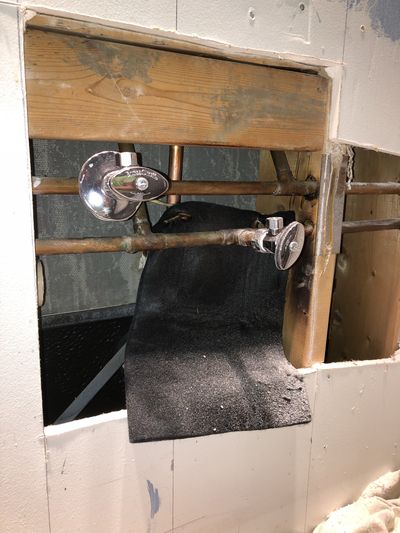Ask the Builder: Hoping things go right vs. investing in advice

I love TV commercials. I laugh at some and groan at others, but I study them to see the techniques companies use to ply their wares. One commercial in particular struck me recently. It advertises a website that says it can save you money on car insurance. The actor says, if I recall correctly, that U.S. drivers overspend by $21 billion a year on insurance.
What struck me about this ad was that I feel the same way about home maintenance and improvement. Homeowners waste a lot of money – perhaps billions of dollars – every year when they work on their homes. I’ve been working diligently on ways to solve that problem.
How do homeowners waste their money on fixing problems? When they decide to invest money in their homes, they face a choice: Either they hire a contractor, or they roll up their shirtsleeves and do the work themselves. The trouble is they often fail to invest the time to find out how to do the job the right way and invest foolishly.
They proceed hoping everything is going to work out just fine. They hope the contractor knows the right way to do the job. But based on the countless help requests I get each month on my website, I think it’s fair to say things don’t always work out too well.
Here’s a tip: Hope is a feeling you should indulge only about things that you can’t control. Work on your home is something you can control completely; you need to take that control.
Allow me to share with you some of the frightening scenarios I see each day. Mike reached out to me recently because he wants to install a black iron natural gas pipe in his home. The issue is his gas lines are made with soft copper. Mike was wondering what’s the best way to connect black iron with soft copper.
I shared with him that two good friends of mine, a husband and a wife, died three years ago when their house exploded from a gas leak. I then told Mike I’ve been a master plumber since age 29 and that what he needs to know requires a short conversation because there’s just too much vital information to transfer to him via email.
I needed to know that he completely understood what had to be done so the connection was made safely. The terrifying thing to me is that he might end up online watching videos that show the wrong way to make this critical connection. What are the credentials of the people who are creating content you or Mike are consuming?
Do you actively think about this when you land on websites? When you visit a page on a home improvement website, do you immediately go to the About Us page to see what the credentials are of the persons who create the content you’re about to use to make a decision that involves thousands or tens of thousands of dollars? If you don’t, you’re making a serious mistake.
Several days ago, John reached out to tell me that he’s about to insulate the vaulted ceiling of his log cabin. He had questions about a vapor barrier because the contractor he was thinking of hiring suggested one. What could possibly go wrong in this scenario?
For starters, if John or his contractor makes a mistake, his entire roof could rot out because water vapor coming up through the house can’t rapidly be shunted outdoors.
If this job is not done correctly, and roof ventilation is part of it, a giant mold bloom could develop between the ceiling and the underside of the roof. This toxic mold can sicken John and his family. Fortunately, John did the right thing and talked to me before he made a grave mistake.
Here’s another example. Last year, I drove by an old house that’s being renovated just 3 miles from my home. I stopped to look at the new deck that was being added to the rear of the house.
The carpenters just placed the outer support beam on top of two wobbly 4x4 posts. They just angled inferior nails from a nail gun through the beam into the posts. Believe it or not, the local building inspector allowed this to happen.
I couldn’t imagine a worse connection detail other than maybe using masking tape to hold the wood together. I’d never stand or sit on the deck of that old house under renovation.
How could this mistake have been prevented? The homeowner could have hired a structural engineer for several hundred dollars to get the best solution. Or, he could have typed into a search engine, “Connect deck beam to post” – and hoped he would find the correct answer. Or he could have hired another expert to tell him the correct way to prevent a deck collapse.
You can help me solve this vexing problem of why more homeowners don’t reach out to experts to help them before they waste money or put their lives at risk.
Just take a simple anonymous survey I’ve created. Use this URL, and be sure to type in the word “GO”: GO.askthebuilder.com/advicesurvey.
Subscribe to Tim Carter’s free newsletter and listen to his new podcasts at askthebuilder.com.